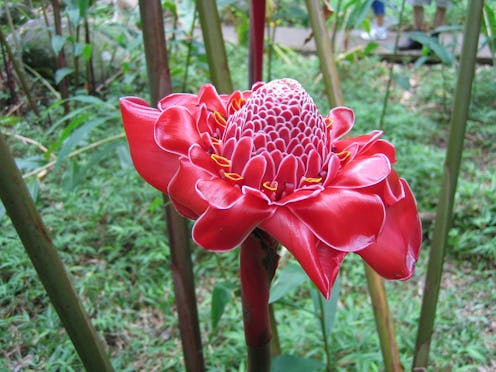Fashion
6 Ancient Haircare Tips You Should Be Using Today

Throughout history, women (and men) have tried every outrageous trick, productm and hairstyle out there in an attempt to fit in with whatever civilization they were part of. Ancient Egyptians shaved their heads and turned to wigs, Europeans covered their heads with elaborate powdered wigs, and over in China, the goal was to have long hair that stayed black long into old age. While wigs haven't made a comeback yet, our ancestors were full of ancient haircare secrets that are still useful today.
Civilizations vary in the type of products they traditionally used for haircare because in ancient times, all products had to be natural and readily available. In today's world, beauty products are full of chemicals, and although there are some chemical-based products we can't live without, it's always good to go all-natural when you can. DIY beauty products are easy to make, inexpensive, and can work just as well as their chemical-laden counterparts.
Luckily, we can turn to ancient civilizations for easy DIY ways to make hair longer, stronger, shinier, and less damaged. Although some of the methods are a little out there, you'll be familiar with other ingredients that we still use in beauty products today.
1. Aloe Vera
In Native American culture, long hair was valued in both male and female populations. In photographs of Native American populations, both men and women had long black hair that resisted graying even in old age. Part of this can be chalked up to aloe vera, which was an essential ingredient in Native Americans' diet. The versatile plant is known for relieving burns, but it can also be used to strengthen and protect hair. Apply some of the gel to your hair when you're going to be in the sun, or use it to soothe a sunburned scalp.
2. Sapote Oil
This oil, also referred to as sapuyulo oil, is extracted from the fruit of the mamey sapote tree, which is native to Central and South America. The oil is a multi-tasker that can be massaged into the scalp and is known to reduce dandruff, soothe dry and itchy scalps, and even promote hair growth.
3. Argan Oil
This Moroccan product is ubiquitous in the beauty world, but that doesn't make it any less useful. The cult-favorite Josie Maran 100% Argan Oil has made the rounds, and for good reason. Argan oil has a number of beauty uses, but its moisturizing properties are perfect for dry and damaged hair.
Josie Maran 100% Argan Oil, $36, Amazon
4. Fermented Rice Water
Women in the Yao ethnic minority in a small village in the Guangxi Province of Southern China are known for their extraordinarily long hair, which stays long and black well into the womens' 80s. One of the secrets to their hair is fermented rice water, which is used as a shampoo in many Asian cultures. They store the leftover water from cooking rice and store it for several days so it has a chance to ferment. Using this water as a shampoo allegedly makes hair softer and stronger.
5. Awapuhi
This plant, which grows in tropical areas like Hawaii and the Polynesian islands, is a member of the ginger family has also infiltrated the modern beauty world. The flower of the awapuhi produces a gel that has long been used as a hair product. Today, brands from Paul Mitchell to Suave have added awapuhi to their shampoos and conditioners.
6. Castor & Almond Oils
No compilation of ancient beauty practices is complete without one from Egypt. Ancient Egyptians used kohl to create the original cat-eye and were among the first people to use sugaring to remove body hair. In Egypt, the combination of castor oil and almond oil was used to promote hair growth by massaging it into the scalp. The castor oil does the actual work, while almond oil creates a more fluid liquid and sweetens the smell of the mixture. You can make a DIY hair-growth formula easily with just a few ingredients.
Images: Ryan Orr; Dinesh Valke; Sander Spolspoel; Laura Shefler; Andy; Harsha K R/Flickr